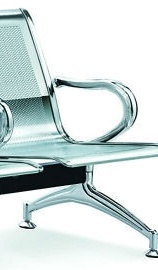 It’s 2008. Your firm is desperately strategizing how to win enough work in this deep economic downturn to keep the lights on and the doors open. If you’re like most firms, you eventually responded to the need to cut expenses by downsizing employees. The first out the door were the B-players; you worked hard to keep the best of the best.
It’s 2008. Your firm is desperately strategizing how to win enough work in this deep economic downturn to keep the lights on and the doors open. If you’re like most firms, you eventually responded to the need to cut expenses by downsizing employees. The first out the door were the B-players; you worked hard to keep the best of the best.
Why are we talking about this a decade later? Because during that time and the years following, your clients grew to EXPECT the “A-Team” on every project.
The market spent the better part of ten years raising their expectations, thinking “all A-Team, all the time” was the new normal. Today, as companies are busier than ever, and with the talent war in full swing, no firm can propose or staff every project with nothing but recognizable “A” players.
And clients are not happy! We’ve heard report after report of clients rejecting proposals from long-time favored firms, disappointed that the firm didn’t care enough to give them the A-team.
It’s too late to go back and change what the market expects. Smart firms, however are recognizing that this reality has an impact on their client relationships. And in response they are developing creative ways to keep winning. They continue to maintain great client rapport applying two basic strategies: positioning unfamiliar team members as A-players, and developing more employees into top-notch talent.
Positioning Unfamiliar Team Members
A mid-sized structural engineering firm in Chicago wanted to break into a new market, targeting DOT work in a western state. After losing several consecutive bids, they heard in a loss debrief that the DOT didn’t feel like they were getting the best, most senior engineers assigned. Though each of the engineers proposed had a great resume, relevant experience, and were indeed selected from the best of the firm’s resources, the DOT, not knowing the engineers, hesitated to select them.
For a few years the firm had been soliciting feedback from most of their clients at key moments in their projects. Armed with this data, they pursued yet another opportunity with the DOT, this time clearly sharing the measured expertise of the assigned engineers. Much like an online review, the firm was able to say “Our firm, measuring over 600 clients, has sustained over a 96% rate of meeting and exceeding expectations. The two project managers we’re proposing on this project are among the 10 highest-rated on our staff, with 100% satisfaction ratings as assessed by their clients.”
This little dose of additional information helped set the DOT’s mind at ease, knowing they were getting “the best.” It led to the firm’s first win in the state. Four years later, they continue working together on numerous projects.
Developing Additional Talent
The above story sounds easy to implement if you have the right metrics, but what about team members who are either new and still learning, or experienced but who never quite resonate well with the client. What about those who trail in the metrics?
This group needs a different approach, one focused on developing your staff into productive, client-focused, relationship and brand builders. Again, the simple process of measuring what clients think throughout a project equips these team members with the insights needed to be responsive, flexible, and oriented towards the clients’ delight.
As you coach these project managers to listen well, respond to concerns with poise, and ultimately deliver successful outcomes, the clients being served by these team members will begin to see them as their A-players. Not only will you have data to support the value every one of your staff creates, but each client will feel like their project manager is an A-player.
It’s All About Perception
Smart firms take this strategy even further and purposefully introduce new staff to long-term clients on a regular basis. They use their client listening strategies to let those clients see that their firm has lots of A-players which is an important step in the process. Clients begin to see it’s not the individual, but the firm, creating patterns of excellence. Instead of loyalty being directed at an individual (who may leave, or be needed on another project), clients’ loyalty will be directed toward the firm. The firm, for its part, develops a reputation as an A-Player factory, and develops great confidence in the brand within the market.
Winning is all about perception. All clients want the sense of security they feel knowing they have your firm’s “best” working on their project. Firms that manage client perceptions successfully and continue to develop new top-performers will gain a significant advantage over their competition. These actions drive firm growth and will sustain them through the next “2008” when it comes.
About the Author: Ryan Suydam co-founded Client Savvy in 2004 to help firms create fierce client loyalty. He has coached over 300 organizations and over 10,000 professionals on the skills required to be “client savvy.” His clients are twice as likely to be recommended by their clients, three times as likely to realize above-average financial returns, and consistently attract and retain better employees. Ryan studied architecture at N.C. State University, before beginning a career in an architectural firm. He quickly began leveraging technology and process to solve new problems in creative ways, leading to the foundation of Client Savvy. Based in Raleigh, NC, he welcomes your questions at ryan@clientsavvy.com.

Client Savvy is a Silver sponsor of PSMJ's THRIVE 2017 taking place October 3-5 in Denver. Are you ready for two high-energy days of inspiration, networking, and fun? THRIVE 2017 is your chance to learn, to network, and to get an eye-opening perspective on what the world’s most successful A/E/C firms are doing right now to thrive. This unique annual event attracts senior-level executives from a wide range of A/E/C organizations located around the world. Registration is now open!



